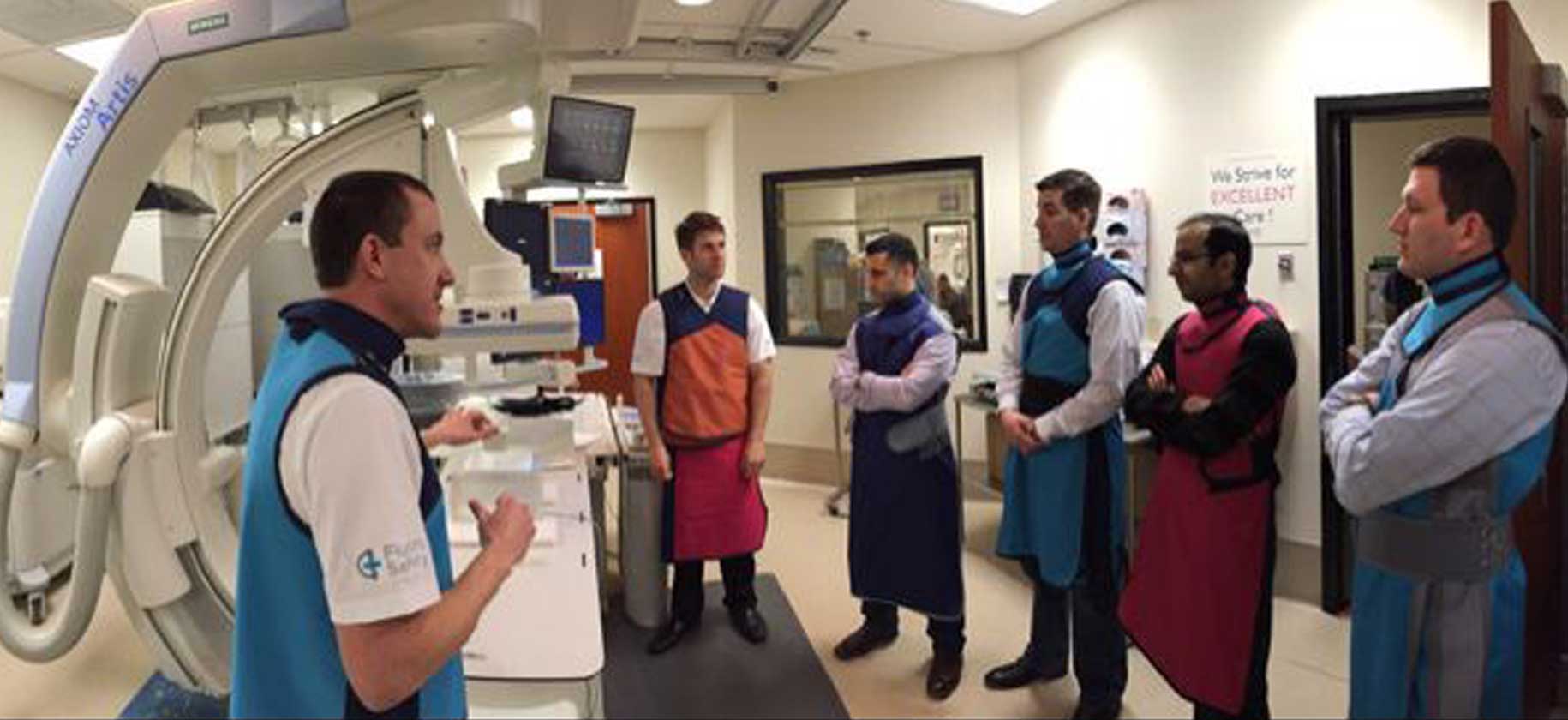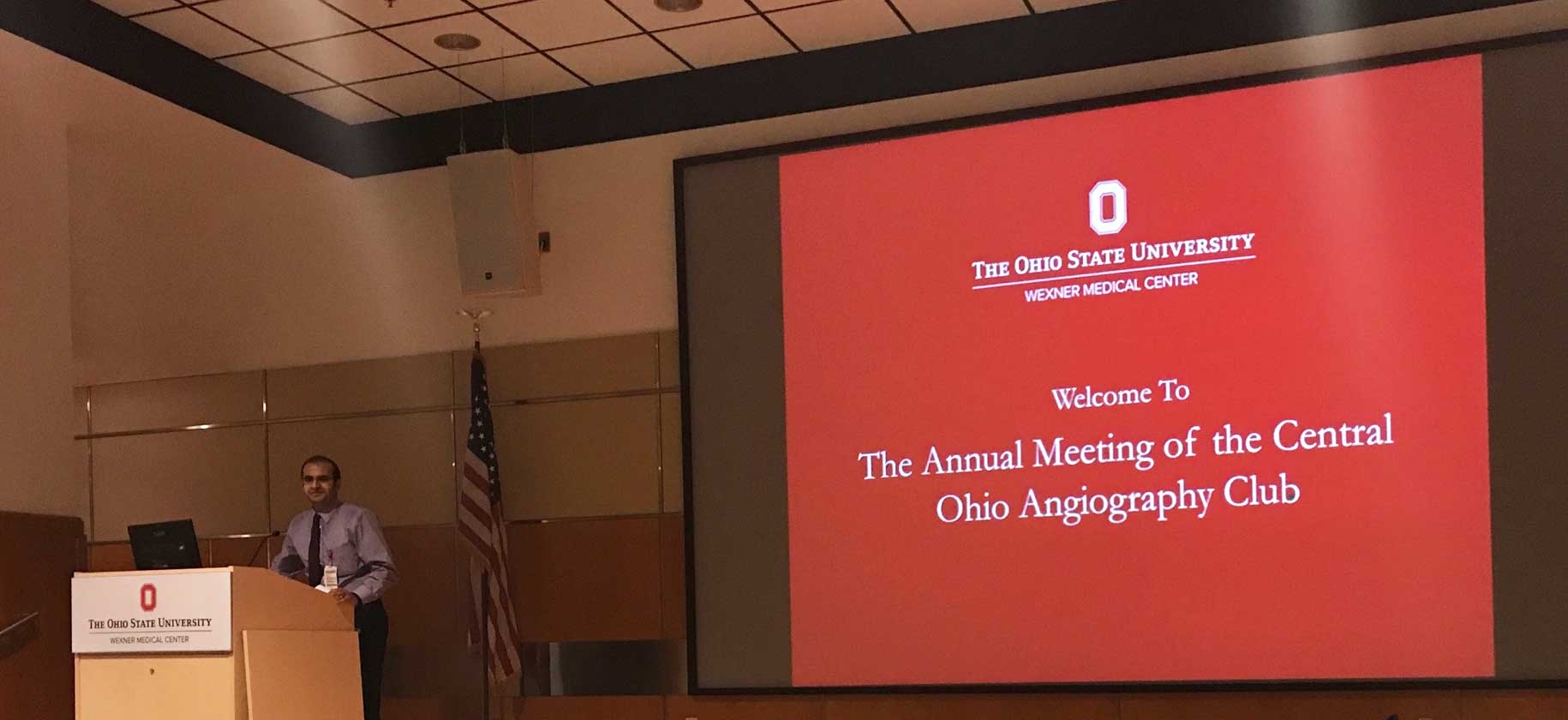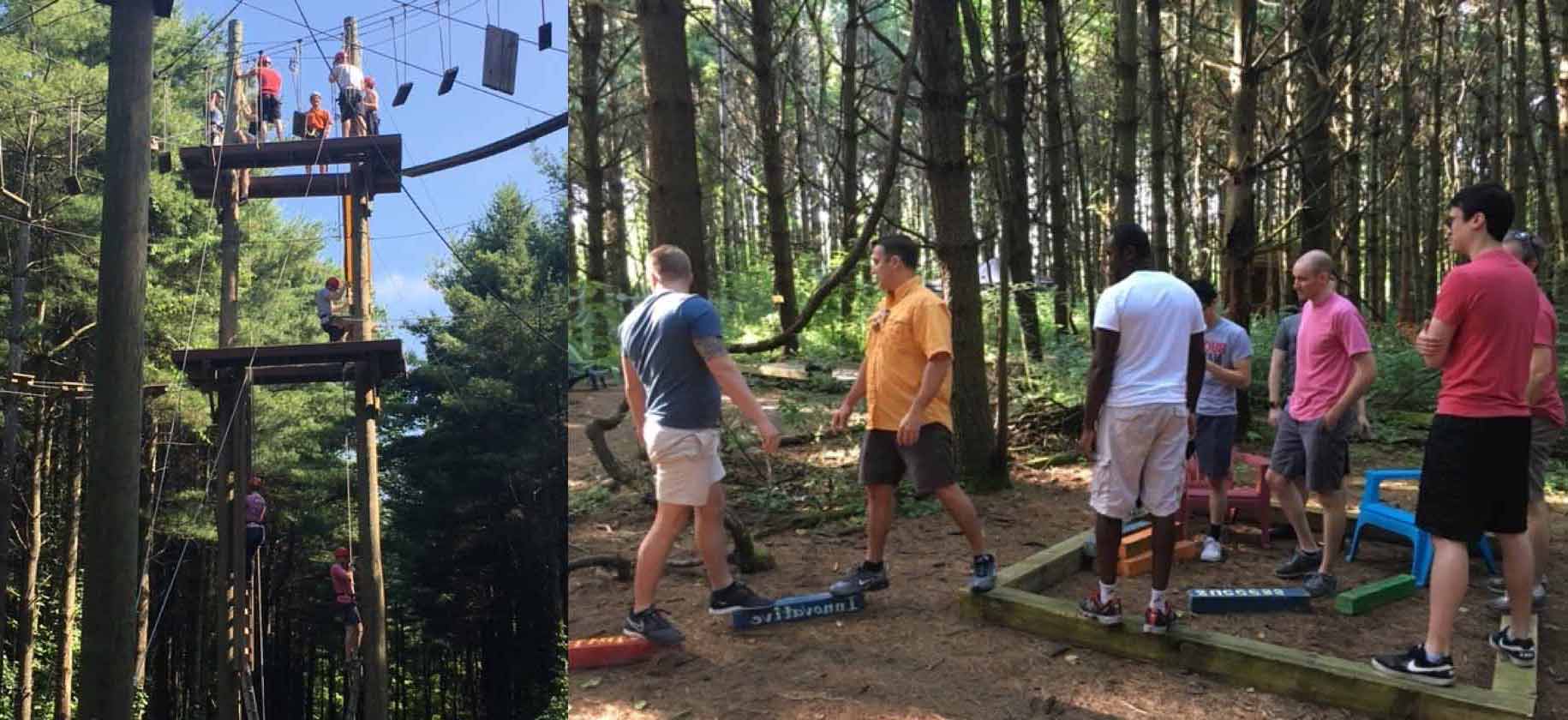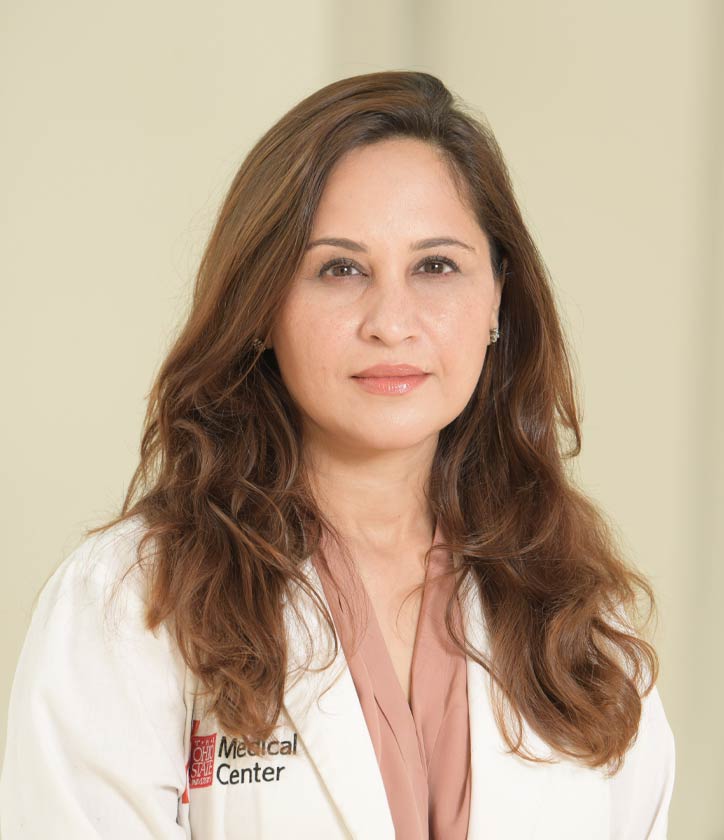Interventional/Diagnostic Radiology (IR/DR) Integrated Residency Program
The Ohio State University College of Medicine Department of Radiology offers three Interventional Radiology / Diagnostic Radiology (IR/DR) Residency positions per year through the National Resident Matching Program (NRMP). This Residency is a five-year program to commence post-internship and is comprised of three years of predominantly diagnostic radiology with two years of interventional radiology. Applicants would ideally be in the fourth year of medical school, but non-traditional applicants will be accepted with the understanding that Residency training would not commence until 15 months after the match. Additionally, the Diagnostic Radiology Residency Program offers up to two positions in an ACGME-approved Early Specialization in Radiology (ESIR) curriculum, although these residents will have to later match in an Independent IR Residency to complete their training.
Our practice features a myriad of image-guided interventions in oncology, hepatobiliary, genitourinary, complex venous pathology and much more. The environment encourages exchange of knowledge and experience among residents and faculty in the program, as well as with residents, fellows and faculty in other major clinical specialties within the Ohio State University Wexner Medical Center.
Procedural volume in our department last year exceeded 8,500 patient encounters. We anticipate our procedural volume per trainee to easily exceed 2,000 cases. We have developed a robust interventional oncology practice that is integrated with oncologic subspecialties. Our practice performs a high volume of image-guided therapies that include chemoembolization, radioembolization, cryoablation and radiofrequency or microwave ablation.
The practice consists of two sites separated by approximately 100 yards. The Ohio State University Comprehensive Cancer Center – Arthur G. James Cancer Hospital and Richard J. Solove Research Institute (OSUCCC–James) was opened in 2015 and is the third-largest cancer hospital in the nation. The OSUCCC–James is one of only 46 National Cancer Institute (NCI)-designated comprehensive cancer centers in the nation. OSUCCC–James has three state of the art angiography suites, with one dedicated computed tomography procedure room and two interventional ultrasound suites.
The University Hospital site serves the main hospital, as well as the the Ohio State University Wexner Medical Center Richard M. Ross Heart Hospital and the Ohio State University Wexner Medical CenterBrain and Spine Hospital. This site has three Angiography suites, installed in 2018, along with an older fourth suite. Additionally, an interventional computed tomography procedure room and one procedural ultrasound suite are found in University Hospital.
The program’s primary training site is the medical center including University Hospital, The Ross heart Hospital, The Ohio State University Comprehensive Cancer Center – Arthur G. James Cancer Hospital and Richard J. Solove Research Institute, Ohio State Brain and Spine Hospital, and Ohio State East Hospital with pediatric radiology training at Nationwide Children’s Hospital, and Vascular Surgery training at Fairfield Medical Center. In addition, six ambulatory sites (Including CarePoint Gahanna, CarePoint Lewis Center, CarePoint East, Ohio State Outpatient Care New Albany, Ohio State Martha Morehouse Outpatient Care, Ohio State Outpatient Care Dublin, The James Outpatient Care, Stefanie Spielman Comprehensive Breast Center, and opening in 2026 Outpatient Care Powell).
There is a full slate of support services, as well. Advanced practice providers, nurses and technicians are exceptionally well-trained. More than sufficient outpatient intake and recovery facilities are present in both the James and University Hospital. A fully functioning clinic operates every weekday until noon supporting the clinical mission of IR.
- Comprehensive Clinical Training
Our program is designed to leverage the unique clinical environment and opportunities available at The Ohio State University Wexner Medical Center. We provide residents with a strong foundation in the fundamentals and principles of Interventional Radiology (IR), ensuring they are well-prepared to deliver the highest quality of care to their future patients. - Excellence in Interventional Oncology
Residents receive extensive hands-on experience in all aspects of Interventional Oncology, including diagnosis, imaging, biopsy, port catheter placement, and the direct treatment of oncologic conditions through ablations, chemoembolizations, and infusions. This comprehensive training equips them with the necessary skills to manage a wide range of interventional procedures, including non-oncologic interventions and their associated complications. - Health Equity and Disparities Awareness
Our institution serves a variety of patients, and we are committed to training residents to recognize healthcare disparities. By understanding these challenges, our trainees will be prepared to seek innovative solutions to reduce disparities in healthcare delivery throughout their careers. - Innovative Problem-Solving
We encourage residents to think critically and creatively when approaching complex cases, including those that many practices may avoid. By fostering a mindset of innovation and problem-solving, we prepare our trainees to take on challenging cases that can significantly benefit patient outcomes. - Advancing the Field Through Research
Residents are encouraged to contribute to the growing body of Interventional Radiology literature. With access to a broad range of advanced clinical practices, they have unique opportunities to engage in impactful research that advances both oncologic and non-oncologic interventional techniques.
Interventional Radiology - Independent Residency Program
The Ohio State College of Medicine Department of Radiology offers up to two Independent Interventional Radiology Residency positions per year through the National Resident Matching Program (NRMP). The number of positions is dependent on the number of students in fifth-year Integrated Residency. There are two total positions filled first from the Integrated program, supplemented by the Independent Match, if needed. This residency is technically a two-year position. However, Ohio State requires completion or expected completion of an accredited ESIR curriculum, allowing the resident to skip the first year of this residency, effectively making this a one-year position.
The IR Independent Program has no vacancies and will not be accepting applications for the 2025-2026 and 2026-2027 academic years.
The Independent Residency utilizes the resources described above to emphasize the refining of wire/catheter skills in an apprenticeship model. The availability of a large number of quality cases and the relatively small number of residents allows the maximum exposure to interesting and educational cases. Case logs typically show 1,100 to 1,400 individual patient encounters, predominately of the more educational variety.
- Specialized Training for Future Leaders in IR
Our fellowship program provides a rigorous education in the core principles and techniques of Interventional Radiology. Fellows gain the expertise needed to deliver exceptional care in diverse clinical settings, preparing them to be leaders in the field. - Advanced Interventional Oncology Expertise
Fellows receive specialized training in Interventional Oncology, gaining proficiency in diagnosis, imaging, biopsy, port catheter placement, and targeted oncologic therapies such as ablations, chemoembolizations, and infusions. This comprehensive approach ensures they are well-equipped to manage both oncologic and non-oncologic interventional procedures and their complications. - Commitment to Health Equity
As part of an NCI-designated cancer center, our program emphasizes the importance of addressing healthcare disparities. Fellows learn to recognize and tackle inequities in patient care, enabling them to develop solutions that improve access and outcomes for every patient. - Expertise in Complex Venous Interventions
Our IR Division has a strong focus on venous interventions, particularly venous reconstruction. Fellows are trained to approach complex cases with an innovative mindset, ensuring they can confidently manage advanced cases that may be overlooked by other practices. - Contributions to Interventional Radiology Research
We strongly encourage fellows to engage in scholarly activity, contributing to both oncologic and non-oncologic IR literature. The breadth of clinical cases at our institution provides a rich foundation for impactful research, advancing the field and improving patient care.










